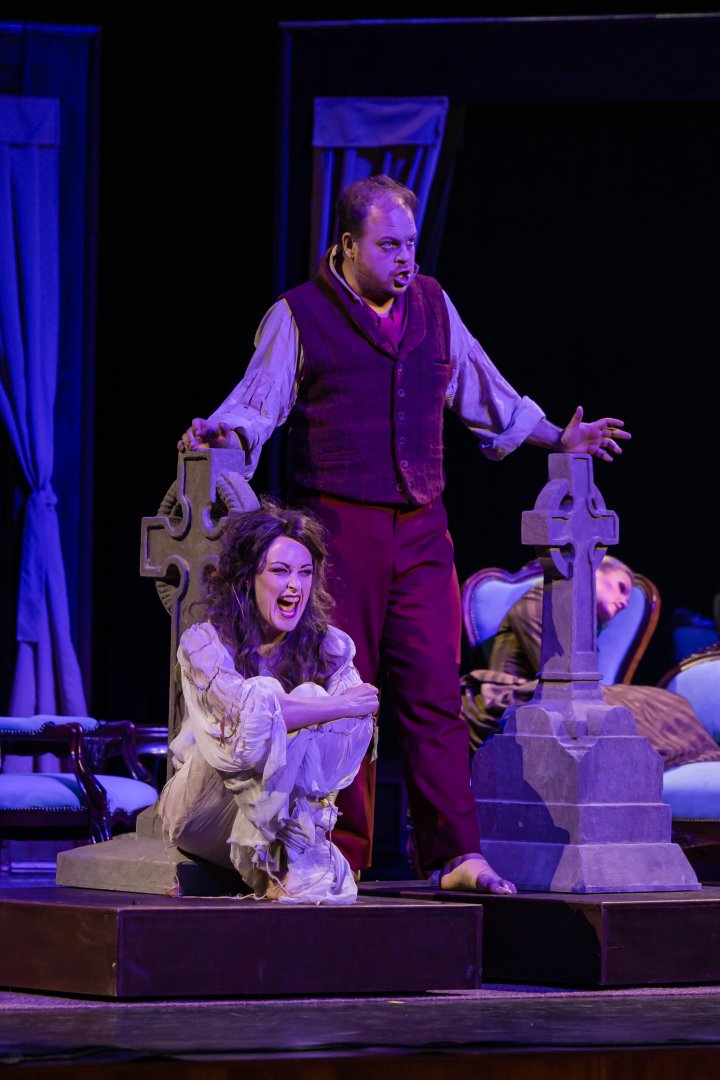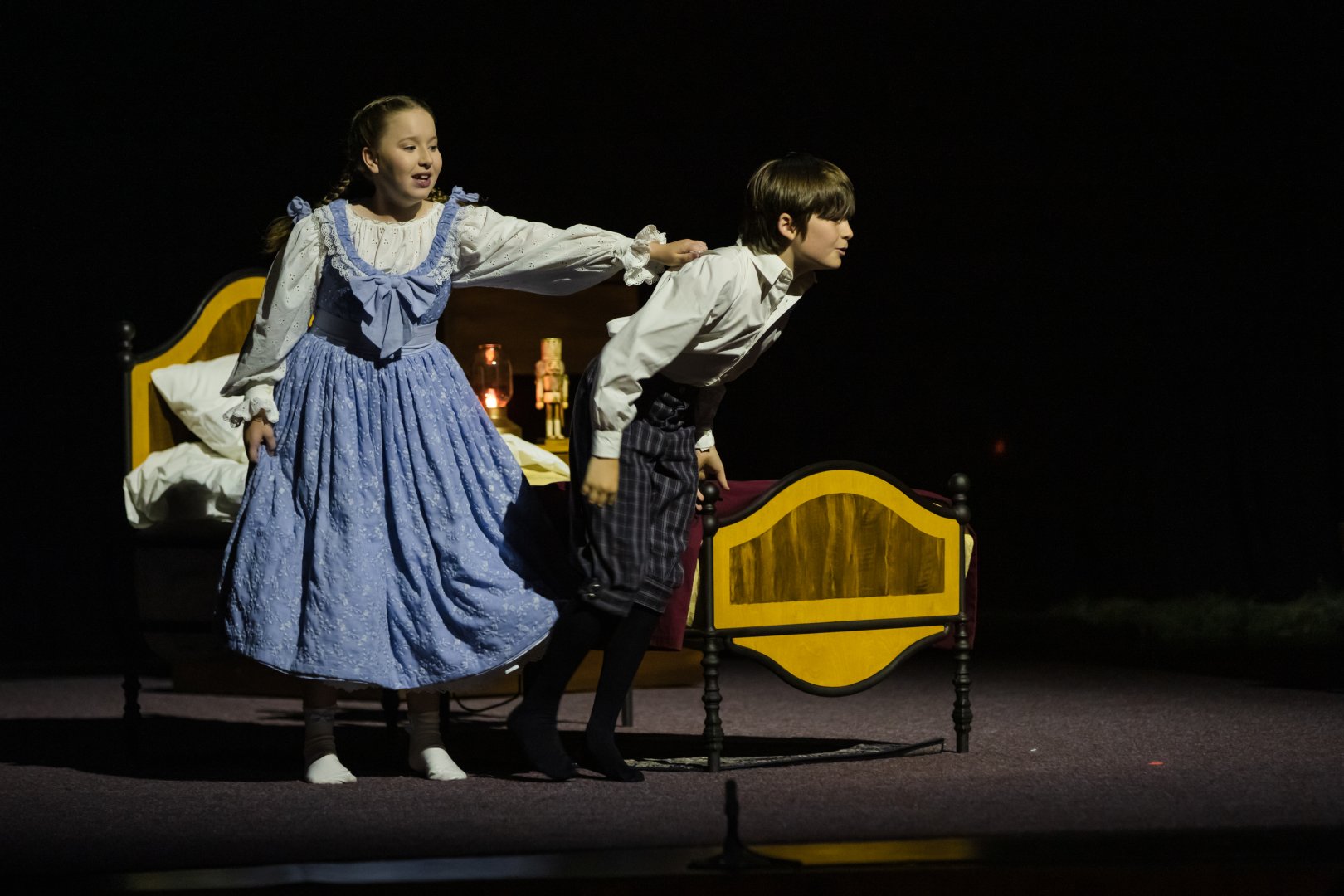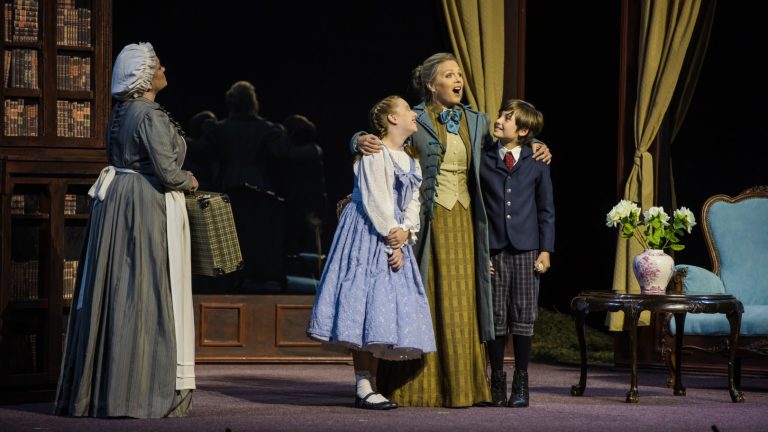Horror fiction author Stephen King said in 1983 that “The Turn of the Screw” (written in 1898 by Henry James) was one of only two great supernatural works of horror written up until 1960. He stated that both contain „secrets best left untold and things left best unsaid,” which is the basis of the horror genre. Another author, Gillian Flynn, called “The Turn of the Screw” one of the most chilling ghost stories ever written.
The Budapest Festival Orchestra’s (BFZ) opera wing – The Iván Fischer Opera Company — presented the 1954 Benjamin Britten chamber opera “Turn of the Screw” on September 9 and 10 at Müpa Budapest. It apparently delighted more than mystified the audience – only because the performance was so beautifully executed that the chilling Gothic terror aspect of the story was already a foregone conclusion. Or perhaps, because our modern media is so saturated with actual horror, that such a Victorian device is now perceived as an amusing trope of the past. In Maestro Fischer’s rendition, the combined aspects of the visual life and the fluid sonic tapestry of a fabulously descriptive orchestration and precision singing created an exotic mix of effects that outdid the supposed potency of the “chilling thriller” promise.
As a season opener for Müpa’s classical offerings, this score featured the international singers Miah Persson as the newly-conscripted young governess of two orphaned children who often lapse into inscrutable demonic babble, Laura Aikin as their long-time housekeeper Mrs. Grose, Andrew Staples as both the prologue narrator and the haunting demon Peter Quint, and Allison Cook as Miss Jessel, the demented ghost of the children’s former governess. The two children, Ben Fletcher (Miles) and Lucy Barlow (Flora) were extraordinary, rendering a performance I will not forget.

This lesser-known 20th century work attracted a full house and ecstatic applause here, based on, I think, both the company’s stellar reputation and the ingeniousness of this production’s mise-en-scène. The Iván Fischer Opera Company, which after several recent years’ worth of performances in various global locations, including New York City where it garnered impressive reviews, continues to be a stunningly viable international vehicle under the aegis of BFZ. Aside from the superior musical aspects, the team’s magical method of staging works such as this and others (i.e. “Falstaff” at Müpa a few years ago) in symphonic halls, outdoor amphitheaters, or other non-opera venues, further contributes mightily to their inventiveness.
For this production, Maestro Fischer teamed up with three Italians: director Marco Gandini, set designer Andrea Tocchio, and costume designer Anna Biagiotti, who have collective histories working with such luminaries as Franco Zeffirelli, Luchino Visconti, Piero Pasolini, and Graham Vick. This team achieved brilliant solutions for a modest and flexible set on the Béla Bartok Hall stage that needed to represent several different locations: a home (Bly House), a library, a schoolroom, a church, and even a partial semblance of a forest and a river.
For the “ghosting,” they constructed two structural arches that were indicating possible entrances and exits, but were in fact functioning as window frames for the ghosts’ appearances within them. Special effects director Nils Corte employed an AI technique software that created illusion tricks, via clear glass films incorporated into the stage design. Other unusual mechanics were at play as well: at one point, Quint and Jessel rode in on two tombstones moving toward and passing each other.

The lurking evil in the plot emanated from Quint, whose witchcraft had inveigled the two children and Jessel to such an extent that he, even from his grave, had a lasting power over them. His frequent hauntings of Bly House, whether perceived or not (Mrs. Grose always denied such things), were vocally expressed via long Baroque melismas and other embellishments that painted a bizarre, yet compelling portrait of a creature living somewhere between heaven and hell. Staples’ vocalism was sonorous and effortless in his delivery throughout. Jessel’s mad ravings spanned a huge tessitura, accompanied by facial expressions of insanity and delirium.
Persson’s pert portrayal of the loyal and stalwart Governess was perfection and full of tonal allure. Breaking the 4th wall to let the audience in on her every thought, she shined in the spotlight while spinning out Britten’s angular score: the composer used whole-tone sequences and variations on them throughout. Aikin’s version of the officious schoolmarm-ish Mrs. Grose worked beautifully as a contrast to Persson’s authenticity.

As Flora, Barlow’s juvenile mix of innocence and seductiveness showed her powers as a budding actress. And as Miles, Fletcher wowed us with his crystal-clear soprano — and even more amazingly — his prowess at the piano: he accompanied a hefty chunk of the opera on the onstage spinet with professional acumen.
As the Broadway musical world would say; “This show has legs!”











